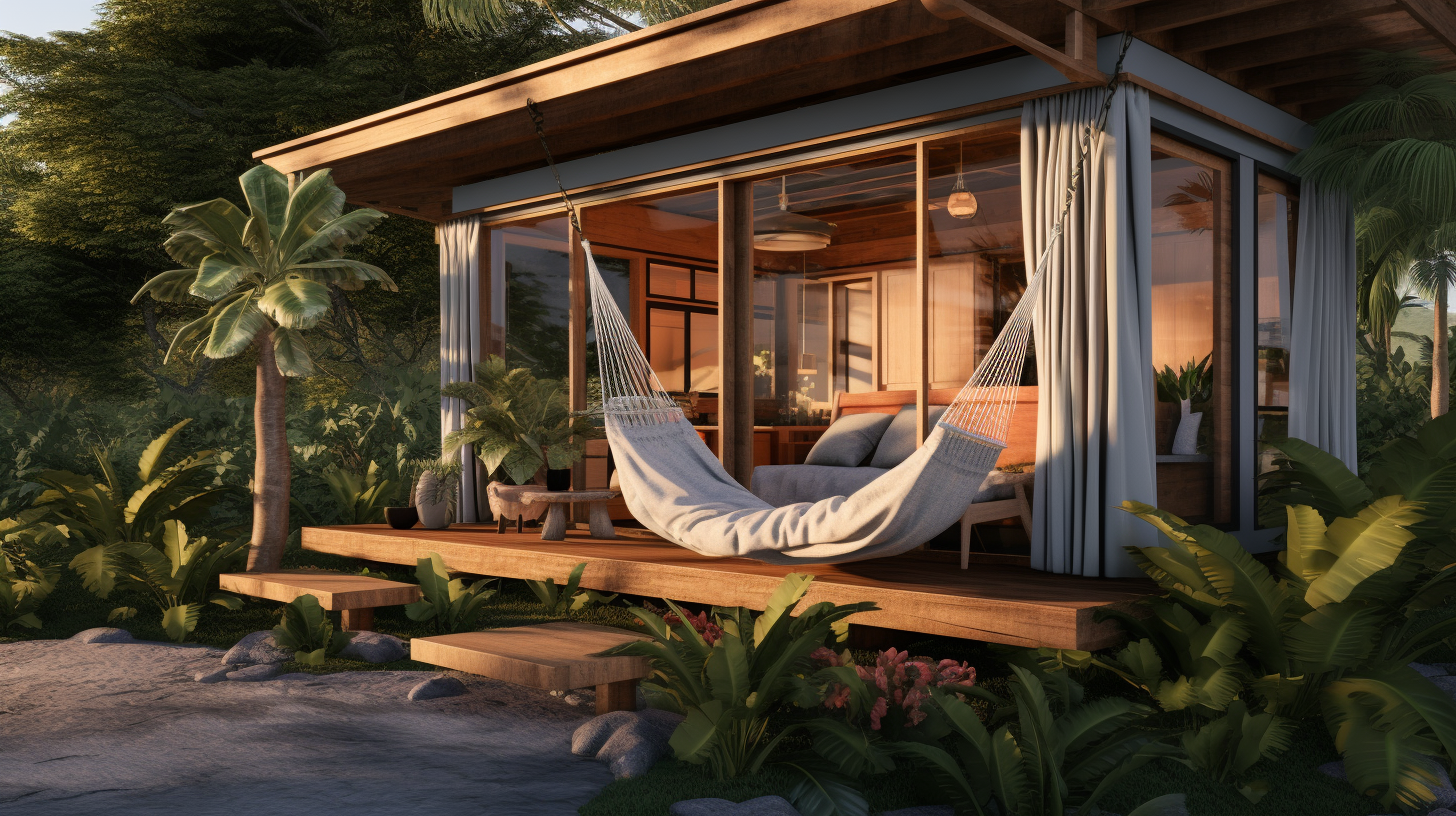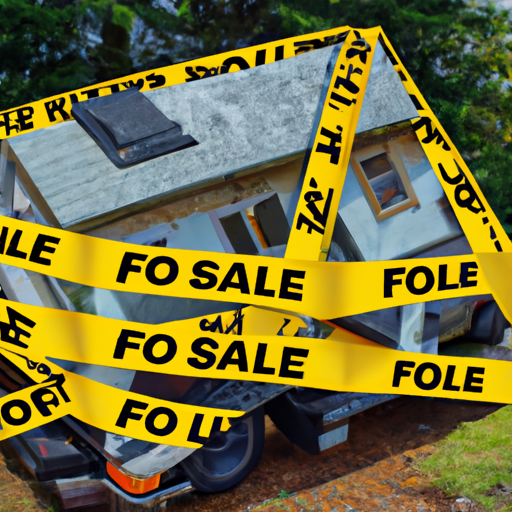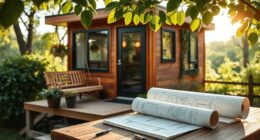While strolling along a peaceful road in a picturesque location, I stumbled upon a charming small house nestled among larger buildings by sheer luck. This house exemplified the concept of minimalistic living. As I stood there, captivated by its simple charm, I couldn’t help but wonder – how much does a tiny house cost?
In this article, I will delve into the world of tiny houses and explore the factors that affect their cost. From the size and design to the location and materials used, there are various elements that contribute to the price tag of these compact dwellings. By analyzing data and sharing case studies, I aim to provide you with a comprehensive understanding of the average cost of tiny houses.
Furthermore, I will discuss financing options and hidden costs that you should consider before embarking on your tiny house journey. Additionally, I will share valuable tips on how you can save money when building or purchasing a tiny house.
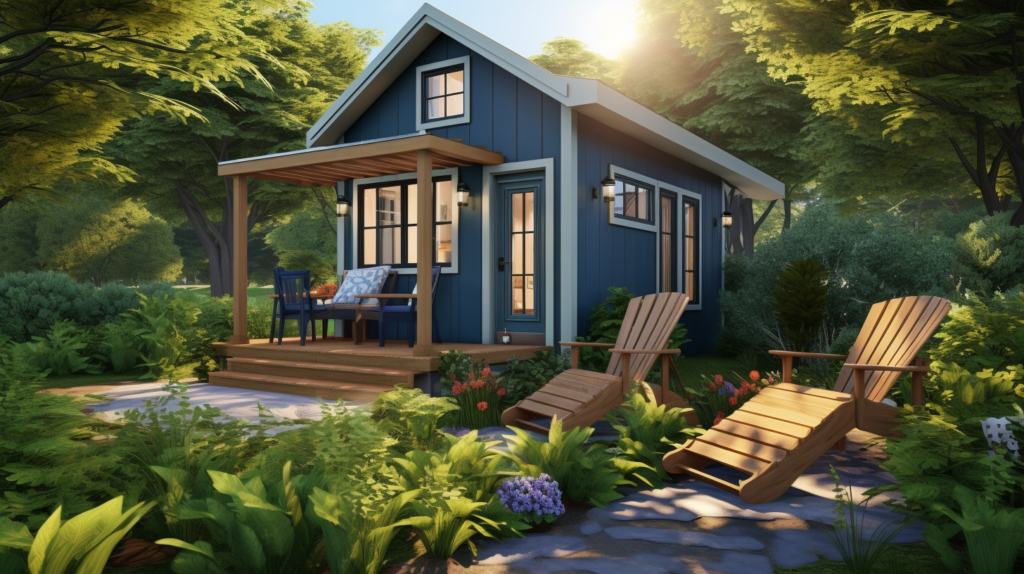
So, if you’re intrigued by the idea of downsizing and embracing a simpler lifestyle, join me as we uncover the fascinating world of tiny house costs.
Key Takeaways
- Factors that affect the cost of tiny houses include size, design, location, and materials used.
- Customization options can increase the price of a tiny house.
- Hidden costs of owning a tiny house include maintenance expenses, specialized insurance, and the cost of land or parking.
- DIY construction and design can significantly reduce costs.
Factors Affecting the Cost of Tiny Houses
Wondering what factors impact the cost of tiny houses? When it comes to determining the price of a tiny house, there are several key factors to consider.
One major factor is the level of customization options chosen by the buyer. The more customized the house is, the higher the cost will be. Features such as high-end finishes, luxury appliances, and unique design elements can significantly increase the price.
Additionally, the location of the tiny house can have a significant impact on its cost. Factors such as land prices, building regulations, and availability of utilities all play a role in determining the final price tag. For example, building a tiny house in a popular vacation destination or a high-cost urban area will likely be more expensive than in a rural location with lower land prices.
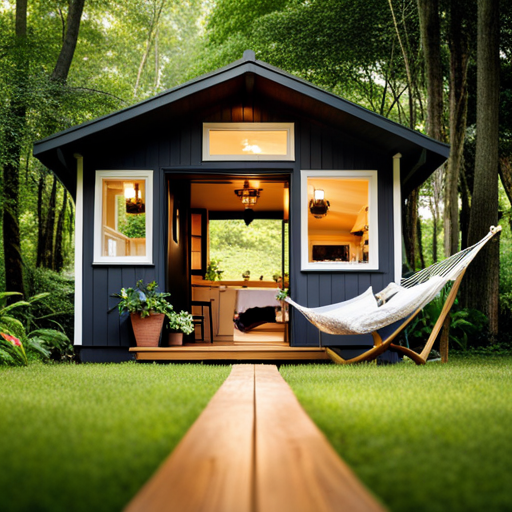
Considering these factors is crucial for anyone looking to build or purchase a tiny house.
Now that we have explored the factors affecting the cost of tiny houses, let’s delve into the average cost of these compact dwellings.
Average Cost of Tiny Houses
Curious about the average price tag for these cozy dwellings? Here’s a breakdown of the average cost of tiny houses, along with some pricing trends and a cost comparison to give you a better understanding.
- Size: The size of a tiny house plays a significant role in its cost. On average, a tiny house can range from 100 to 400 square feet. Smaller houses tend to be more affordable, with prices starting at around $20,000. However, larger tiny houses with more amenities can cost up to $150,000 or more.
- Location: The cost of a tiny house can also vary depending on its location. Urban areas and popular vacation destinations generally have higher prices compared to rural areas. This is mainly due to the higher cost of land and living expenses in these areas.
- Customization: Customization is another factor that affects the cost of a tiny house. If you opt for more luxurious features or unique designs, the price will increase accordingly. Custom-built tiny houses can range from $50,000 to $100,000 or more.
- Material Quality: The choice of materials used in the construction of a tiny house can impact its cost. High-quality materials tend to be more expensive but can provide better durability and aesthetic appeal. On average, a tiny house with good quality materials can cost between $30,000 and $80,000.
When considering the cost of a tiny house, it’s important to remember that these figures are just averages and can vary significantly based on individual preferences and local market conditions. Now, let’s explore the various financing options available for those interested in owning a tiny house.
Financing Options for Tiny Houses
Looking to own a cozy dwelling? Let’s explore financing options for tiny houses, where you’ll discover that 76% of tiny house owners choose alternative financing methods to make their dream home a reality. When it comes to tiny house loan options, there are a few avenues to consider. Traditional banks and credit unions offer personal loans, but they may have stricter requirements and higher interest rates compared to other options. Another popular choice is to seek out specialized lenders that cater specifically to tiny homes. These lenders understand the unique nature of tiny houses and can provide more flexible terms and competitive rates.
Crowdfunding has also emerged as an innovative way to finance tiny homes. Platforms like Kickstarter and GoFundMe allow individuals to pitch their tiny house project to a large audience and receive financial support from backers. This option not only helps with financing but also creates a sense of community around the project.
To give you a clearer picture, here’s a table summarizing some common financing options for tiny houses:
| Financing Option | Pros | Cons |
|---|---|---|
| Traditional Banks | Lower interest rates | Stricter requirements |
| Specialized Lenders | Flexible terms | Higher interest rates |
| Crowdfunding | Community support | Unpredictable outcome |
Now that we’ve explored financing options for tiny houses, let’s delve into the hidden costs to consider when embarking on your tiny house journey.
Hidden Costs to Consider
Let’s delve into the often overlooked expenses that come with owning a tiny house, shedding light on the hidden costs you need to consider before embarking on your cozy dwelling journey.
While the initial cost of a tiny house may seem appealing, there are several hidden costs that can quickly add up. One of these hidden costs is maintenance expenses. Just like any other home, tiny houses require regular maintenance to ensure their longevity. From roof repairs to plumbing issues, these expenses can catch you off guard if you’re not prepared.
Additionally, hidden costs can arise from the need for specialized tiny house insurance. Traditional homeowners’ insurance may not cover tiny houses, so it’s important to find an insurance policy specifically tailored to your tiny house needs. This can result in higher premiums compared to conventional homes.
Another often overlooked expense is the cost of land or parking. Finding a suitable location for your tiny house can be challenging and costly. Whether you choose to purchase land or rent a space in a tiny house community, this is an expense that needs to be factored into your budget.
Hidden costs and maintenance expenses are important factors to consider when calculating the overall cost of owning a tiny house. Now that we have a better understanding of these expenses, let’s explore some tips for saving money on a tiny house.
## Tips for Saving Money on a Tiny House
When it comes to saving money on a tiny house, there are several key points to consider.
First, DIY construction and design can significantly reduce costs as you have control over the materials and labor involved.
Secondly, upcycling and repurposing materials not only saves money but also promotes sustainability.
Lastly, energy efficiency and sustainable features can help lower long-term expenses by reducing utility bills.
By adopting a minimalistic lifestyle and embracing these strategies, one can save a substantial amount of money while still enjoying the benefits of living in a tiny house.
DIY Construction and Design
Constructing your own tiny house can be a budget-friendly option, but be prepared for the immense amount of time and effort it requires. DIY construction techniques and innovative design ideas are key to saving money. By doing the work yourself, you can avoid labor costs and have more control over the materials used.
When it comes to construction, there are various methods you can utilize, such as using reclaimed materials or opting for alternative building techniques like straw bale or shipping container construction. These methods not only save money but also contribute to sustainable living.
Additionally, incorporating innovative design ideas, such as multipurpose furniture and smart storage solutions, can maximize the use of limited space. Transitioning to the next section, upcycling and repurposing materials can further reduce costs while adding unique character to your tiny house.
Upcycling and Repurposing Materials
When it comes to building a tiny house, the DIY approach can be both cost-effective and rewarding. However, constructing a tiny house from scratch requires careful planning and resourcefulness. One way to save money and reduce environmental impact is by upcycling and repurposing materials. This not only gives new life to old items but also helps to minimize waste.
Here are some creative interior design ideas for tiny houses:
– Utilizing reclaimed wood for flooring and furniture.
– Using salvaged windows and doors for natural light and ventilation.
– Incorporating vintage or thrifted items for a unique and eclectic look.
– Repurposing old shipping containers as living spaces or storage units.
– Using recycled materials, such as glass bottles or tires, for construction.
By incorporating eco-friendly building materials and embracing creative design ideas, tiny house enthusiasts can create unique, sustainable, and affordable homes.
Now let’s explore the topic of energy efficiency and sustainable features in tiny houses.
Energy Efficiency and Sustainable Features
To make your tiny house truly sustainable, you can incorporate energy-efficient features and sustainable technology that will not only reduce your carbon footprint but also save you money in the long run. Green building techniques such as using recycled materials, installing energy-efficient windows and insulation, and utilizing passive solar design can greatly increase the energy efficiency of your tiny house. Additionally, incorporating renewable energy sources like solar panels or wind turbines can provide clean and sustainable power.
To illustrate the potential cost savings of these energy-efficient and sustainable features, consider the following table:
| Feature | Cost | Potential Savings |
|---|---|---|
| Energy-efficient windows | $500 | Up to $200/year |
| Solar panels | $10,000 | Up to $1,000/year |
| Insulation made of recycled materials | $1,000 | Up to $300/year |
By investing in these green building techniques and renewable energy sources, you can not only reduce your environmental impact but also save money on energy bills. This leads us to the next section, where we will explore the minimalistic lifestyle and expenses associated with tiny house living.
Minimalistic Lifestyle and Expenses
Living a minimalistic lifestyle in a tiny house is like stepping into a world of freedom and simplicity. By embracing a minimalistic approach to decor, you can create a space that is both functional and aesthetically pleasing.
Some minimalistic decor ideas include using neutral colors, decluttering, and incorporating storage solutions that maximize space.
The benefits of a minimalistic lifestyle in a tiny house are numerous. Firstly, it allows you to focus on what truly matters, as you’re surrounded only by the essentials. Secondly, it reduces the amount of time and money spent on cleaning and maintaining a larger home. Lastly, it promotes sustainability by encouraging conscious consumption and reducing waste.
Transitioning into the next section on case studies and examples, it’s interesting to see how different individuals have successfully embraced a minimalistic lifestyle in their tiny homes.
Case Studies and Examples
Case studies and examples can provide valuable insight into the cost of tiny houses. By examining various case studies and pricing trends, we can gain a better understanding of how much a tiny house typically costs.
One case study found that the average cost of a tiny house is around $30,000. However, it’s important to note that this cost can vary depending on several factors such as location, size, and materials used.
Another case study focused on pricing trends and found that the cost of tiny houses has been steadily increasing over the past few years. This can be attributed to the growing popularity of the tiny house movement and the increasing demand for these unique living spaces. As more people choose to downsize and simplify their lives, the demand for tiny houses continues to rise, which in turn affects the pricing.
When considering the cost of a tiny house, it’s also important to factor in additional expenses such as land, utilities, and maintenance. These costs can vary depending on the location and individual preferences.
Overall, while the cost of a tiny house can vary, case studies and pricing trends provide valuable data-driven insights into the average cost and pricing trends of these compact living spaces.
Frequently Asked Questions
Are there any specific building regulations or permits required for tiny houses?
Building regulations and permits for tiny houses? Oh, they’re just a breeze to navigate! From building codes to zoning laws, it’s a smooth and stress-free process. No need to worry about any red tape or restrictions at all!
How much does it cost to maintain a tiny house on a yearly basis?
Yearly maintenance costs for a tiny house can vary depending on factors like size and location. However, potential cost savings can be significant due to lower utility bills, reduced maintenance needs, and fewer repairs compared to traditional homes.
Can I use my tiny house as a permanent residence?
Yes, a tiny house can serve as a permanent residence, offering benefits such as lower costs, simplified living, and reduced environmental impact. However, it is important to consider local zoning regulations before making this decision.
What are the available options for insuring a tiny house?
Tiny house insurance options vary depending on factors like location, size, and construction materials. For instance, a friend’s tiny house made of recycled materials got a lower premium due to its eco-friendly design.
Are there any restrictions on where I can park or place my tiny house?
Parking regulations and zoning restrictions vary depending on location. It is important to research and understand these regulations before deciding where to park or place your tiny house.
Conclusion
In conclusion, the cost of a tiny house can vary greatly depending on various factors such as location, materials used, and customization. However, with careful planning and research, one can find affordable financing options and save money by considering hidden costs and tips for cutting expenses.
Remember, just like a small seed that grows into a mighty tree, a little investment in a tiny house can blossom into a fulfilling and sustainable lifestyle. So, embrace the possibilities and let your dreams take root in the cozy embrace of a tiny house.
Hi, I’m Emma. I’m the Editor in Chief of Tiny House 43, a blog all about tiny houses. While tree houses are often associated with childhood, they can be the perfect adult retreat. They offer a cozy space to relax and unwind, surrounded by nature. And since they’re typically built on stilts or raised platforms, they offer stunning views that traditional homes simply can’t match. If you’re looking for a unique and romantic getaway, a tree house tiny house might just be the perfect option.
